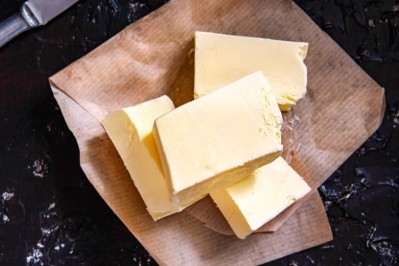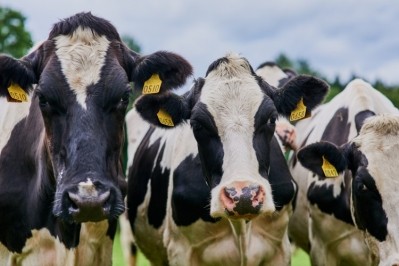Triple boost for Irish powder exports amidst US infant formula shortage

Production challenges in the US have been a key driver behind an increase in specialized nutritional powder exports from Ireland to North America, with values more than trebling in 2022.
The share of Irish dairy exports to the region also grew by 12%, reaching around €800m (US$860m). About 10% of this (€80m/US$86m) came from specialized nutritional powder exports, with the US driving demand for the commodity due to the ongoing infant formula shortage, now expected to last until spring 2023.
“There was a significant increase seen in specialized nutritional powders, particularly in the US as reduced availability of domestic supplies saw product being airfreighted into the market during the early summer to satisfy demand,” reflected David Kennedy, senior sector manager, dairy, at Bord Bia. “Production challenges in the US served to drive import demand there and across the globe. Ireland benefited from this directly with the value of trade to the market more than three times 2021 levels. This one-off activity is, however, unlikely to be repeated in 2023.”
Casein powder exports to North America also increased, with the region alongside the EU accounting for over two thirds of Ireland’s total casein exports, which increased by 68% year-on-year reaching a value of around €790m/US$852m. The US was also the region's main importer of casein.
While volumes were in keeping with 2021 levels, for Irish cheddar North American importers paid more year-on-year due to higher cheddar prices per ton in the EU (over €4,000/US$4,314 from June to December 2022 compared to €3,200/US$3,451 and €3,400/US$3,666 in 2021).
According to Bord Bia, Ireland’s total exports to North America reached around €2.1bn/US$2.27bn, with dairy and drinks being the two largest contributors. The US market accounted for around €1.75bn of the total.
Overall, dairy exports generated €6.8bn/US$7.3bn for Ireland in 2022 - an increase of €1.7bn/US$1.83bn on 2021 - and the category was the largest contributor to the country’s €16.7bn/US$18bn total export value from food and drinks.
The EU remained the biggest market for Irish goods, accounting for 34% of exports while the UK had a 32% share. In the EU, exports rose by 29% with values up 42% year-on-year; dairy goods accounted for almost half of all Irish food and drinks exports to the EU.
Meanwhile, the UK remained the largest single market for Irish commodities, with exports valued an estimated €5.4bn/US$5.8bn in 2022, up 20% on 2021. In comparison, exports to international markets including Africa, North America and Asia, reached around €5.6bn/US$6bn in 2022.
Uncertain outlook
Despite a strong performance for dairy commodities, Teagasc’s December 2022 Situation and Outlook for Irish Agriculture report highlights a less positive outlook for livestock businesses in the new year.
John Tobin, data and intelligence specialist, market environment for Bord Bia, commented: “The general sentiment amongst Irish food and drink businesses as 2022 progressed was one of an increasingly challenging market environment, with a continuation of this trend expected into 2023 as inflationary pressures and challenging macroeconomic conditions persist.”
Referring to a Food and Drink Federation report, Tobin added that there’s evidence that consumers are already spending less on food and essentials, and that the mix of labor shortages, currency volatility and the global uncertainty have all contributed to the struggles of food and drink makers. Quoting a report by the by the Food and Drink Federation, Tobin highlighted that more UK manufacturers had become insolvent by August 2022 than for the whole of 2019.
Bord Bia also noted that the impact of input costs in 2023 will be a decisive factor on pricing across some sectors. “The severity of the impact of rising input prices varies by sector and geography,” the body’s report reads. “For example, improved dairy product pricing offset increased input costs in 2022. However, if EU natural gas prices recover to the highs seen in August 2022 it may force dairy processors to make decisions on their product mix.”
Global growth is also likely to slow, with the International Monetary Fund predicting a 2.7% growth in 2023 and possibly below 2%, with the largest economies set to stall.



















